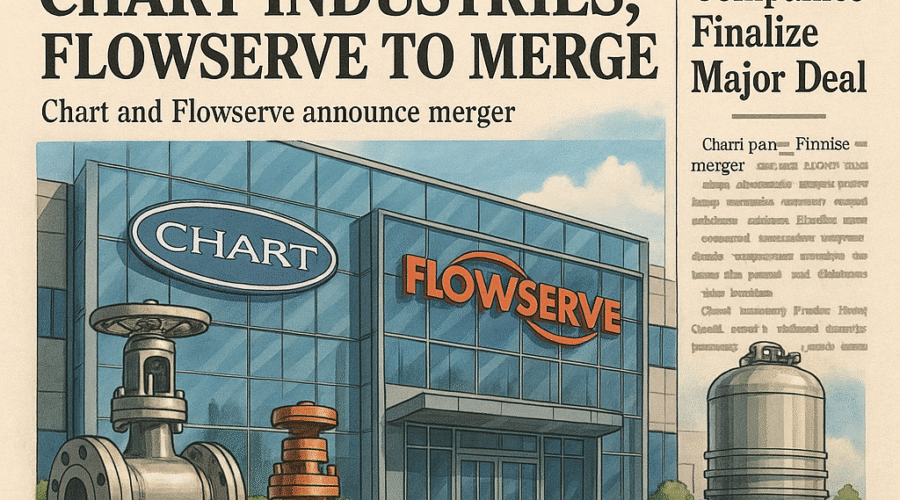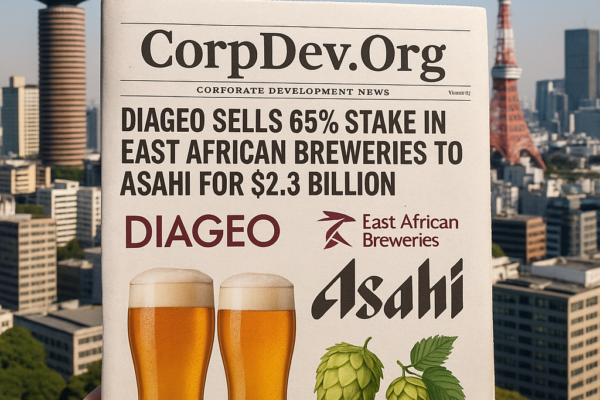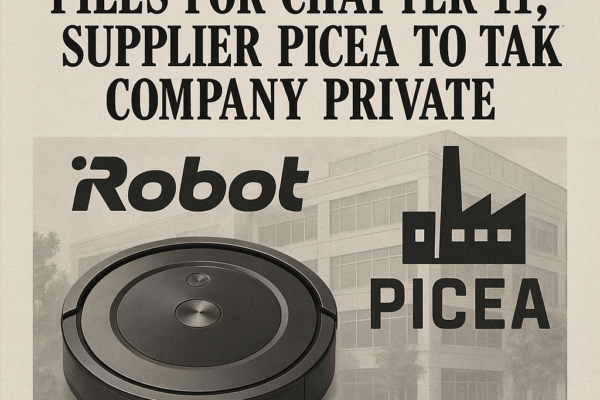In a landmark transaction reshaping the industrial technology landscape, Chart Industries (NYSE: GTLS) and Flowserve Corporation (NYSE: FLS) announced an all-stock merger of equals creating a $19 billion enterprise positioned to dominate process technologies[1][7][13]. The combination unites Chart’s cryogenic expertise with Flowserve’s flow control leadership, establishing an end-to-end solutions provider spanning 50+ countries with 5.5 million deployed assets[1][14]. The deal comes as industrial firms increasingly seek scale to address complex decarbonization challenges and capitalize on $1.2 trillion in global infrastructure spending through 2030.
💼 Seasoned CorpDev / M&A / PE expertise
Strategic Rationale for Industrial Convergence
Complementary Technology Portfolios
The merger creates what Scott Rowe, designated CEO of the combined entity, calls “the most complete process technology stack in heavy industries”[1][7]. Chart brings proprietary systems for cryogenic gas handling critical in hydrogen and LNG applications, while Flowserve contributes flow management solutions used in 85% of nuclear power plants worldwide[4][8]. This fusion enables integrated offerings from front-end engineering to predictive maintenance – a capability gap in current markets where 73% of industrial operators use 3+ vendors for process systems[5].
Aftermarket Services Expansion
With combined aftermarket revenue hitting $3.7 billion (42% of total), the new entity positions itself as the Amazon Web Services of industrial maintenance[1][14]. The installed base of 5.5 million assets creates a recurring revenue moat, particularly valuable given that industrial aftermarkets typically deliver 25-35% EBITDA margins versus 15-20% for new equipment[11]. Cross-selling opportunities could add 200-400 bps to service growth rates through unified digital platforms offering predictive maintenance analytics[5][14].
Financial Architecture of the Deal
Ownership Structure and Synergy Targets
The all-stock transaction values Chart shareholders at 53.5% ownership versus 46.5% for Flowserve, reflecting Chart’s stronger growth profile (11.65% LTM revenue growth vs Flowserve’s 6.2%)[11][12]. Investors approved the 3.165:1 exchange ratio despite Chart’s 7% post-announcement dip, recognizing $300 million in identified cost synergies equivalent to 3.4% of combined revenue[7][11]. Notably, 60% of synergies come from procurement optimization across 29 global manufacturing sites[3][8][14].
Capital Allocation Priorities
Management committed to maintaining investment-grade ratings while targeting 75% FCF conversion to support 3 priorities: 1) R&D doubling to $580 million annually by 2027, 2) Debt reduction from 3.2x to 2.5x EBITDA within 18 months, and 3) Dividend growth aligned with historical 6-8% increases[7][12]. The combined balance sheet holds $1.2 billion in liquidity, providing cushion against cyclical downturns in key markets like LNG (9% of pro forma revenue)[11][14].
Market Implications and Competitive Landscape
Sector Consolidation Acceleration
This merger continues the industrial sector’s consolidation trend, with 14 major deals (>$5B) announced in 2025 alone. The combined entity leapfrogs rivals like Linde Engineering and Emerson in critical niches: 1) #1 in hydrogen liquefaction systems, 2) #2 in nuclear coolant pumps, and 3) #3 in data center thermal management[4][8][14]. Competitors may counter with partnerships – analysts speculate about potential Siemens Energy x Baker Hughes alignments in response[5].
Geographic Exposure Reshuffle
The merger rebalances regional exposure towards APAC (35% of revenue) and Europe (30%), reducing North America’s share from 45% to 32% pre-combination[3][4]. This aligns with McKinsey’s projection that 70% of industrial growth through 2030 will come from Asian infrastructure and European decarbonization projects. The combined footprint adds 11 service centers in Southeast Asia, a region where industrial capex is growing at 9% CAGR[5][14].
Leadership Transition and Integration Risks
Governance Structure
The 12-member board features equal representation from both legacy companies, with Chart’s Jill Evanko as Chair and Flowserve’s Scott Rowe as CEO[7][14]. This dual-leadership model faces scrutiny given Bain research showing 63% of “merger of equals” deals underperform on integration timelines[6]. Critical tests include harmonizing R&D pipelines (Chart’s 18-month development cycles vs Flowserve’s 24-month) and integrating ERP systems across 53 countries[3][4][12].
Cultural Integration Challenges
With Chart’s entrepreneurial culture (25% of staff in engineering roles) colliding with Flowserve’s process-oriented heritage (60-year average plant tenure), change management looms large[3][4]. The companies plan “innovation hubs” pairing Chart’s agile teams with Flowserve’s application engineers, aiming to cut time-to-market by 30% on hybrid solutions[14]. Success metrics include retaining 95% of top technical talent and achieving 80% employee survey alignment on combined mission by 2026.
Investor Considerations and Analyst Outlook
Short-Term vs Long-Term Value Creation
While BTIG maintains its $210 price target on Chart (37% upside), concerns persist about LNG exposure dilution from 18% to 9% of revenue[11]. However, the shift towards higher-margin aftermarkets (42% vs 33% standalone) and nuclear/chemicals (combined 28% revenue) may justify rerating. The deal’s success hinges on achieving promised 2% annual revenue synergies – equivalent to $176 million incremental growth[7][14].
Regulatory Hurdles and Closing Timeline
With expected Q4 2025 closing, antitrust scrutiny focuses on overlap in cryogenic valves (35% combined market share) and LNG heat exchangers (28%)[2][4]. The companies preemptively identified 3 product lines for potential divestiture, while arguing that digital integration creates a new market category exempt from traditional share calculations[7][14]. DOE approval appears likely given the merger’s alignment with U.S. energy security priorities.
As the industrial sector enters its fourth wave of consolidation, this merger exemplifies how mid-cap leaders are scaling to meet trillion-dollar infrastructure demands. The combined entity’s ability to leverage digital twins across 5.5 million assets could set new benchmarks for lifecycle profitability in heavy industries.
Sources
https://www.businesswire.com/news/home/20250604874670/en/Chart-Industries-and-Flowserve-Corporation-to-Combine-in-All-Stock-Merger-of-Equals-Creating-a-Differentiated-Leader-in-Industrial-Process-Technologies, https://www.h2-view.com/story/chart-and-flowserve-to-merge-in-19bn-deal/2127529.article/, https://ir.chartindustries.com/overview/corporate-overview/default.aspx, https://en.wikipedia.org/wiki/Flowserve, https://www.wevolver.com/article/industrial-process-automation-the-future-of-manufacturing, https://www.zoppi.co.uk/blog/understanding-a-merger-of-equals-what-it-is-and-how-it-works, https://ir.flowserve.com/news-events/news-details/2025/Chart-Industries-and-Flowserve-Corporation-to-Combine-in-All-Stock-Merger-of-Equals-Creating-a-Differentiated-Leader-in-Industrial-Process-Technologies/default.aspx, https://www.globaldata.com/company-profile/chart-industries-inc/, https://www.sec.gov/Archives/edgar/data/892553/000119312523102191/d435780dars.pdf, https://www.sec.gov/divisions/corpfin/cf-noaction/14a-8/2021/cheveddenflowserve011921-14a8-incoming.pdf, https://www.investing.com/news/analyst-ratings/btig-maintains-buy-rating-on-chart-industries-stock-after-merger-news-93CH-4081236, https://ir.flowserve.com/news-events/news-details/2025/Flowserve-Corporation-Reports-First-Quarter-2025-Results/, https://www.marketscreener.com/quote/stock/CHART-INDUSTRIES-INC-30727/news/Chart-Industries-and-Flowserve-Corporation-Merger-of-Equals-Press-Release-50157234/, https://www.chartflowserve.com, https://seekingalpha.com/news/4455307-chart-industries-flowserve-to-combine-in-all-stock-merger, https://www.sitepoint.com/a-basic-html5-template/, https://www.dreamhost.com/blog/html5-semantic/, https://en.wikipedia.org/wiki/Article_element





